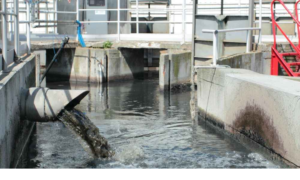What are the Consequences of Improper Waste Water Treatment in Food Industry?
In food processing plants, water use starts with conditioning raw materials such as soaking, cleaning, blanching and chilling. It continues with cooling, sanitizing, steam generation for sterilization, power and process heating, and, finally, direct “in-process” use. Wastewaters released from these industries are turbid, with high concentrations of total suspended solids (TSS), chemical oxygen demands (COD), biological oxygen demand (BOD), fats oils and grease (FOG), and usually nutrients such as nitrogen (including ammonia) and phosphate.
Other characteristics of food processing wastewater are
(a) large seasonal variation,
(b) large hourly variation in concentration and type of contaminants,
(c) often small and variable flows per day,
(d) colored effluent, and
(e) unbalanced concentrations of carbon, nitrogen and phosphorus,
All of these complicate bioreactor treatment.
Food processing wastewater presents many challenges to the classical primary treatment technologies and flotation systems.
- Wastewater from food industry contains very high amounts of contaminants, up to 500 times higher than in the municipal or low strength industrial wastewater influents.
- Depending on what is processed the wastewater influent can change hourly, daily or weekly. Hence one would need a system that can respond fast to changing wastewater strength.
- The space available for the wastewater plant is often very limited.
- The cost of coagulants and flocculants needed for primary treatment can also be very high.
- Wastewater treatment plant consumes a lot of electric power. This contributes to the expenses bared by the food industries.
- When it comes to wastewater treatment, it’s important to have highly skilled individuals who have the necessary training and education to get the job done right. These individuals are responsible for everything from pipe leaks to electrical malfunctions. And unfortunately, there aren’t enough of them.
- Wastewater management facilities produce sludge; it’s the product of pulling all of the waste out of our water supply. Unfortunately, producing this sludge also means cleaning it up, which means there’s a huge footprint left on the environment. Although, there are several advanced technological solutions available for this problem but most of them are costly.

